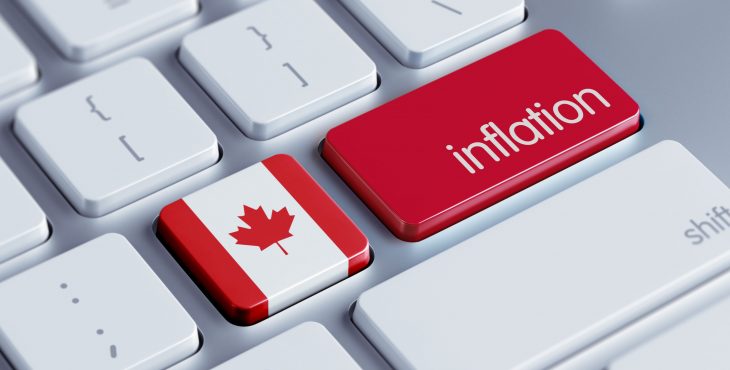As expected, Canada’s headline inflation rate fell to a two-year low in May, although the decrease was driven by sharply lower gasoline prices compared to last year.
The annual consumer price index (CPI) slowed to 3.4% last month, down from 4.4% in April, Statistics Canada reported today. This is the slowest increase since June 2021.
Core inflation, which strips out volatile food and energy prices, slowed to below the 4% mark, with CPI-trim falling to 3.8% (from 4.2% in April) and CPI-median easing to 3.9% (from 4.3%). The Bank of Canada’s preferred measure of core inflation, the three-month annualized increase, remained at 3.85% for Trim and slowed to 3.6% for Median, though both remain well above the Bank of Canada’s target of 2%.
Bank of Canada still expected to hike rates in July
Today’s data release was one of two key reports expected to potentially influence the Bank of Canada‘s upcoming July 12 rate decision meeting. The other is the release of GDP data this Friday.
While the latest inflation data suggests there has been a notable slowdown in price growth, inflationary pressures persist in certain sectors of the economy and therefore leave the doors open to yet another Bank of Canada rate hike next month, observers say.
“Canadian inflation continued to cool in May, but progress is unlikely to be enough to prevent the Bank of Canada from raising rates in July,” noted TD Economics’ Leslie Preston. “Improvements in core inflation are slow, particularly on the services side, with inflation picking up in discretionary areas like travel services and restaurant meals (6.8% y/y in May).”
BMO’s Benjamin Reitzes agrees, pointing to the fact inflation still remains too high for the Bank’s liking.
“Bank of Canada policymakers won’t breathe a huge sigh of relief after this report as core inflation remains sticky and has yet to show signs of a durable slowdown,” he wrote. “The odds of a July rate hike might be slightly lower now, but if the rest of the data hold up over the next 2 weeks, a hike still looks likely.”
Bond markets, meanwhile, are continuing to price in 58% odds of a rate hike in July and 94% odds of a hike by September.
Mortgage interest costs remain largest contributor to inflation
Today’s data also showed the Bank of Canada’s rapid pace of rate hikes over the past year have become the biggest contributor to overall inflation. Excluding higher mortgage costs, inflation would have been 2.5% in May, Statistics Canada said.
Mortgage interest cost, a sub-component of the overall inflation measurements, rose at an annual pace of 29.9% in May, up from 28.5% in April.
While this per capita index is up nearly 30% year-over-year, actual mortgage interest costs in dollar terms as of the first quarter have risen nearly 70% over the past year, data released last week from Statistics Canada shows.
Annual increase in mortgage interest cost
What are base effects?
As noted above, the large slowdown in headline inflation was due largely to base-year effects, which refers to the impact of price movements from 12 months earlier on the current month’s CPI.
When a large upward price change in the base month is no longer influencing the 12-month price movement, it has a downward effect on the current month’s headline CPI, StatCan explained. Conversely, when a large downward price change in the base month falls out, it creates upward pressure on the current month’s annualized figure.
In the first half of 2022, the global economy experienced the effects of the Russian invasion of Ukraine, leading to a significant price increase for Canadian consumers from January to June, resulting in headline consumer inflation rising from 5.1% in January to 8.1% in June 2022.
As the price increases observed in the first half of 2022 gradually fall out of the 12-month price movement, the rate of inflation has slowed in recent months. However, prices still remain elevated, StatCan noted.



